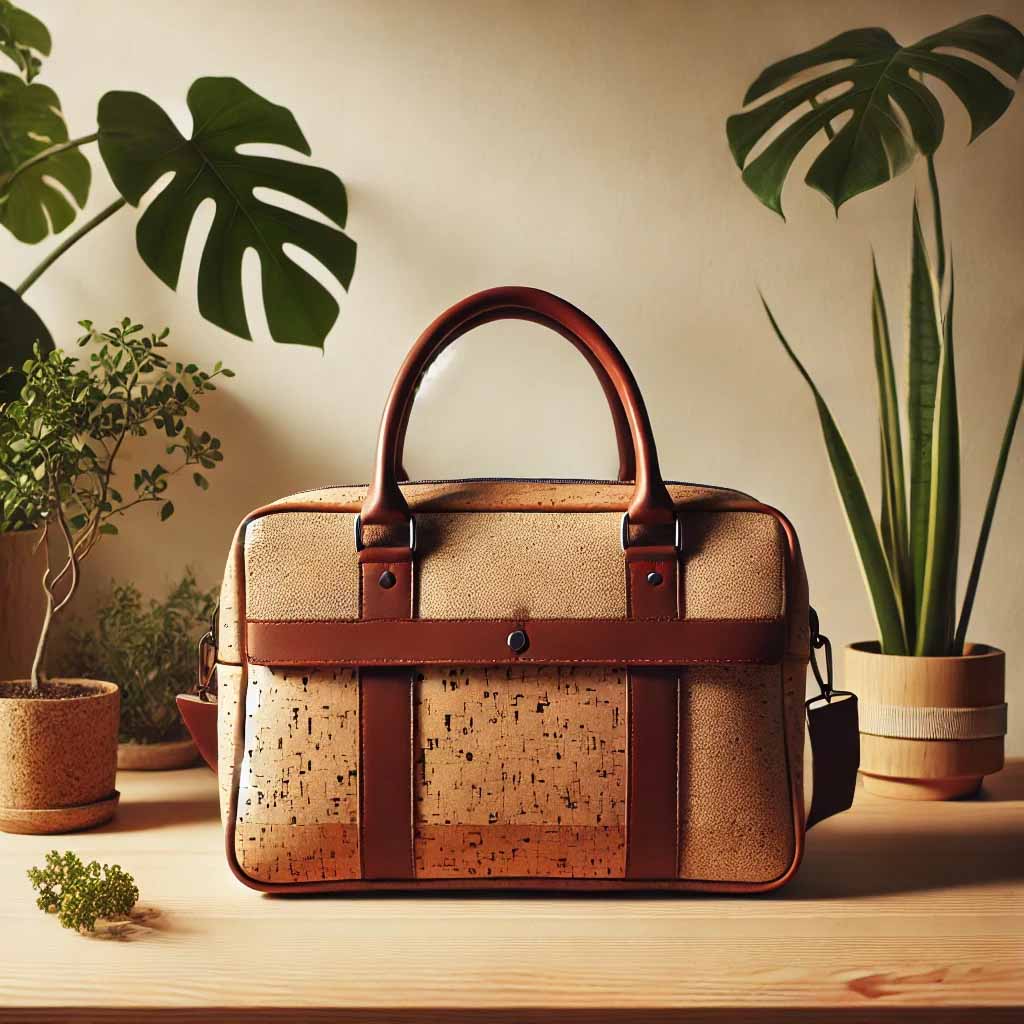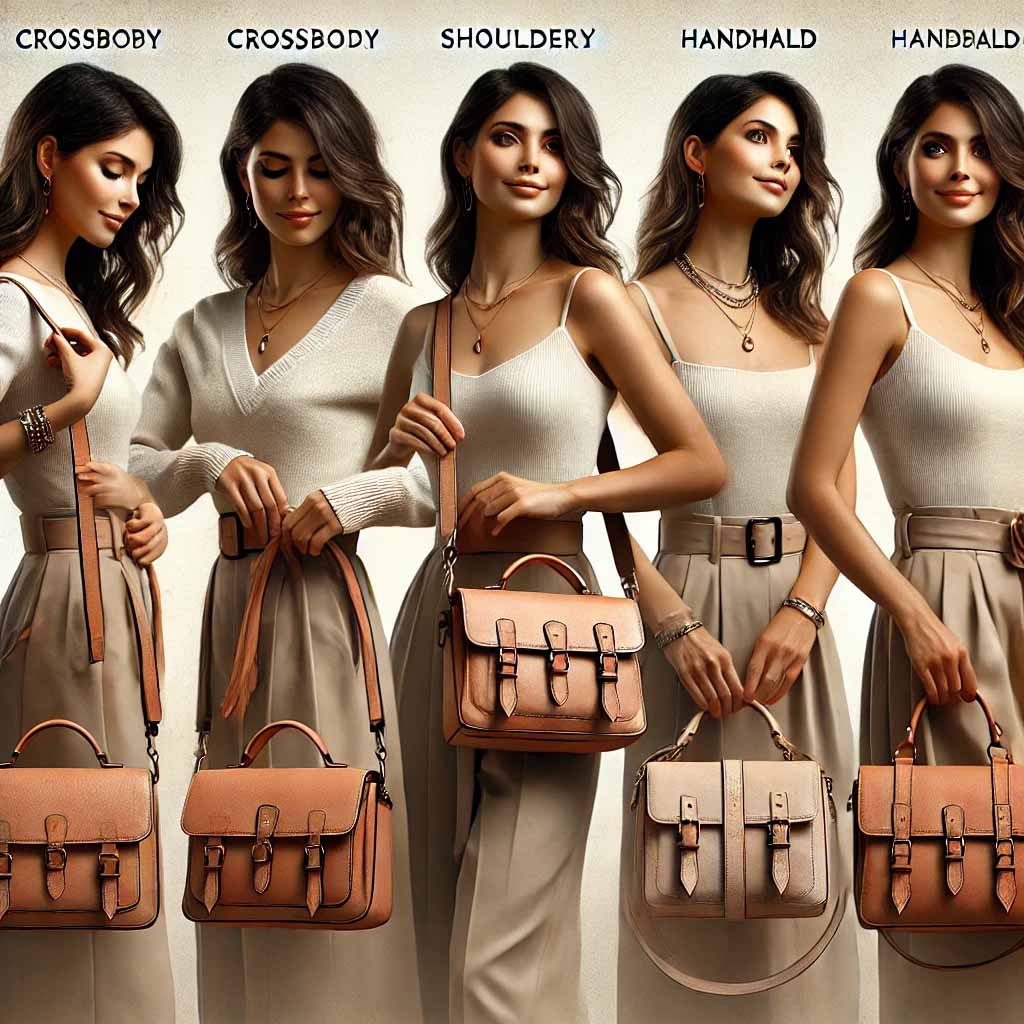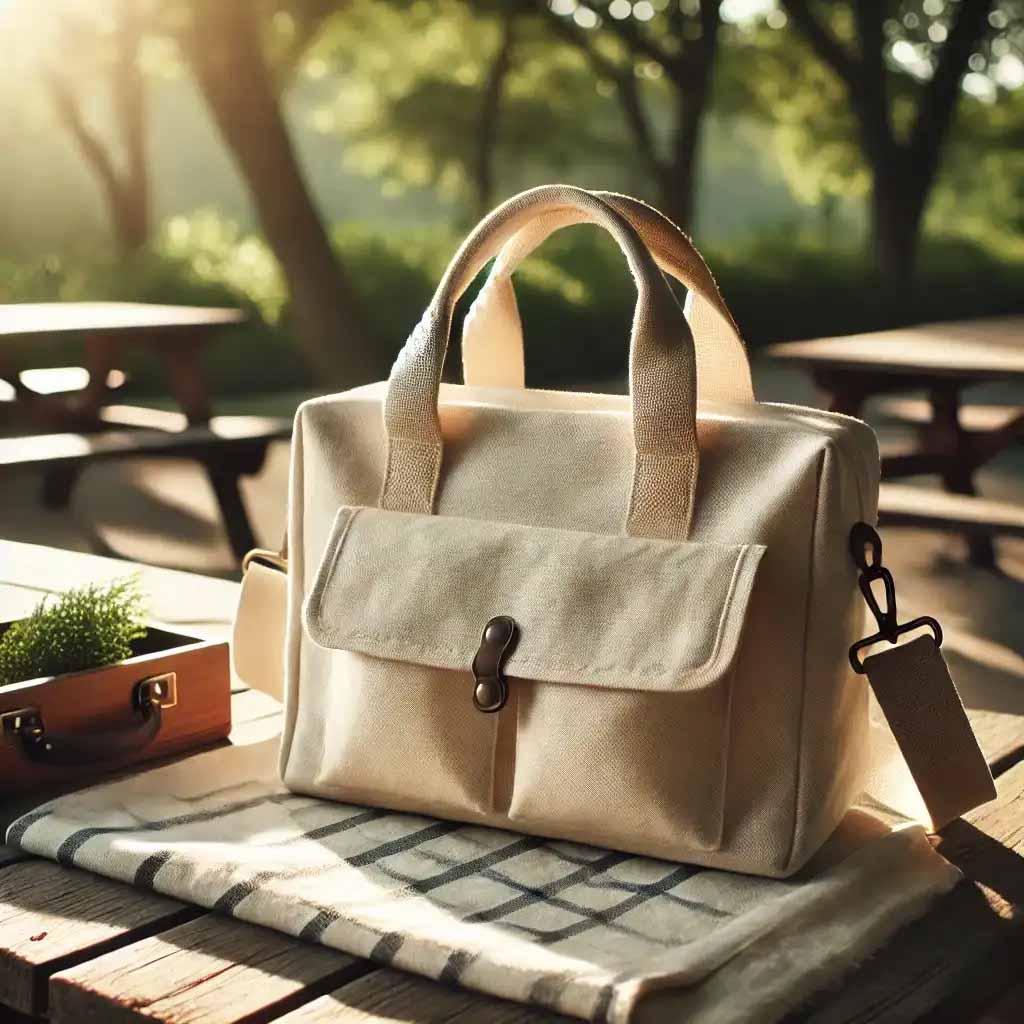HOME GUIDES PURSE VS HANDBAG: WHAT'S THE DIFFERENCE AND WHICH ONE IS RIGHT FOR YOU?
Purse vs Handbag: What's the Difference and Which One Is Right for You?
Written by Erin Sullivan
When it comes to choosing the perfect bag, many of us find ourselves torn between two common terms: purse and handbag. While these terms are often used interchangeably, they actually have distinct meanings, and understanding the differences can help you make more informed decisions when shopping for your next accessory.
At first glance, both a purse and a handbag might seem like the same thing - both are designed to carry your essentials and complement your outfit. However, there are subtle yet significant distinctions that set them apart. These differences go beyond just the size and style of the bag - they also include its function, the context in which it's used, and even regional variations in terminology.
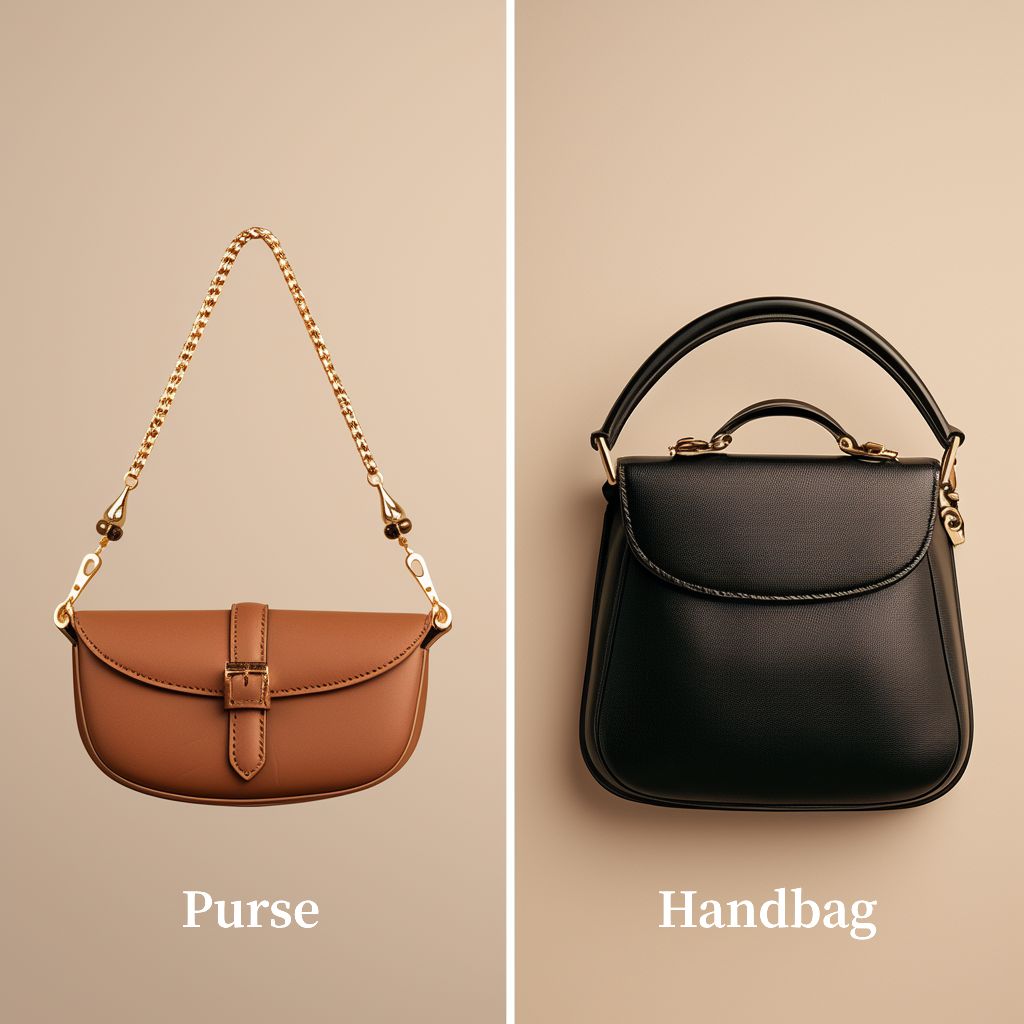
In this article, we'll explore the purse vs handbag debate, delving into the definitions, design differences, and regional nuances. We'll also guide you through which bag might be best suited for your lifestyle and needs, whether you're running errands, heading to the office, or going out for an evening event. By the end, you'll have a clear understanding of both terms, making it easier to choose the right bag for any occasion.
Part 1: Purse vs Handbag - Definition Differences
While the terms “purse” and “handbag” are often used interchangeably, understanding the core distinctions between them can help you choose the right accessory for any occasion. Let's break down the definitions of each to better understand their differences in terms of size, design, and purpose.
1. Purse: A Compact and Practical Accessory
A purse is typically a smaller, more compact bag designed to carry just the essentials.
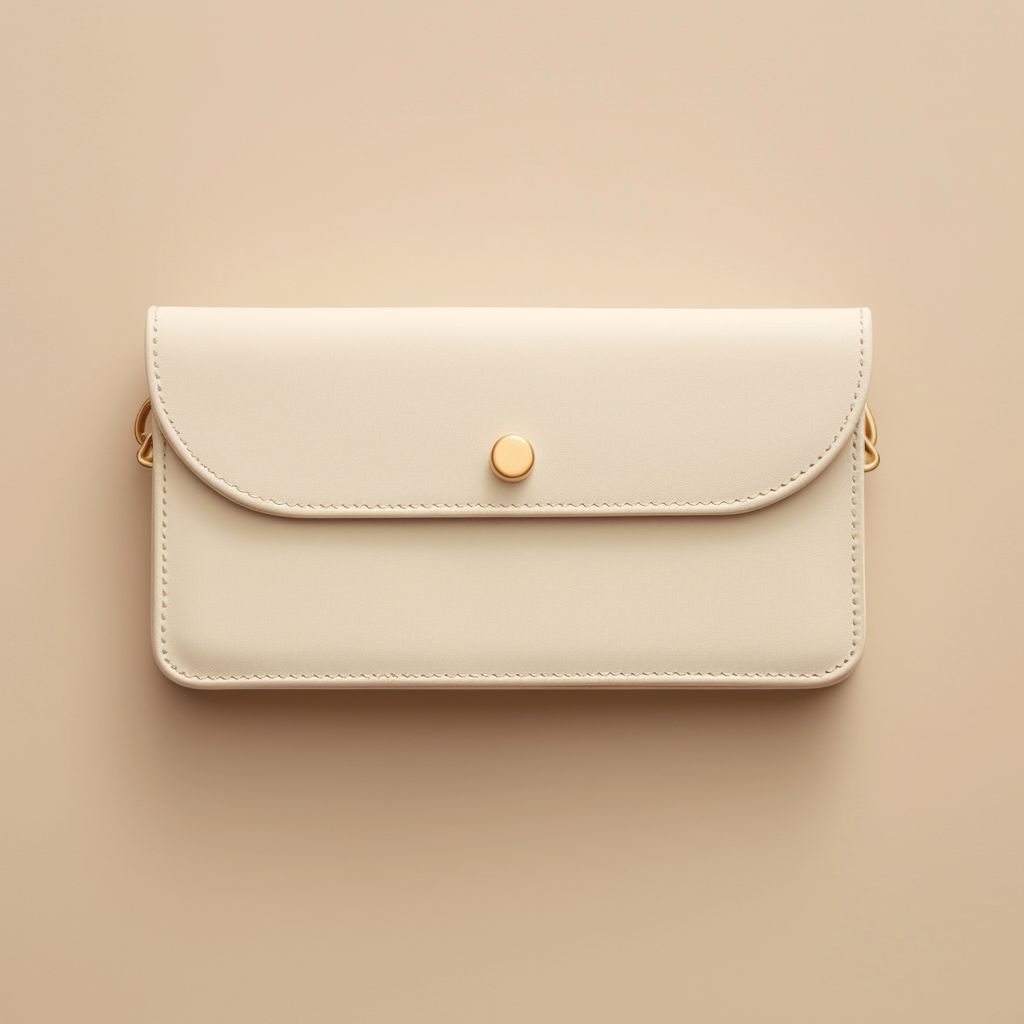
Think of it as a convenient, everyday companion - ideal for quick outings or short trips. Generally, purses are designed to hold only the basics: your wallet, keys, phone, and a few cosmetics or personal items. It's the perfect size for those who prefer to travel light but still want to carry their essentials with them.
- Key Features of a Purse:
- Size: Small and compact, usually just big enough for the essentials.
- Design: Often simpler in structure, purses may or may not have additional compartments or zippers.
- Usage: More suited for casual outings, running errands, or events where you don't need to carry much. Some purses may even be considered “clutches” if they lack handles or straps.
- Occasions: Casual, daily use or a night out - think shopping, meeting a friend for coffee, or attending a casual gathering.
2. Handbag: A Structured and Versatile Companion
A handbag, on the other hand, is generally larger and more structured than a purse.
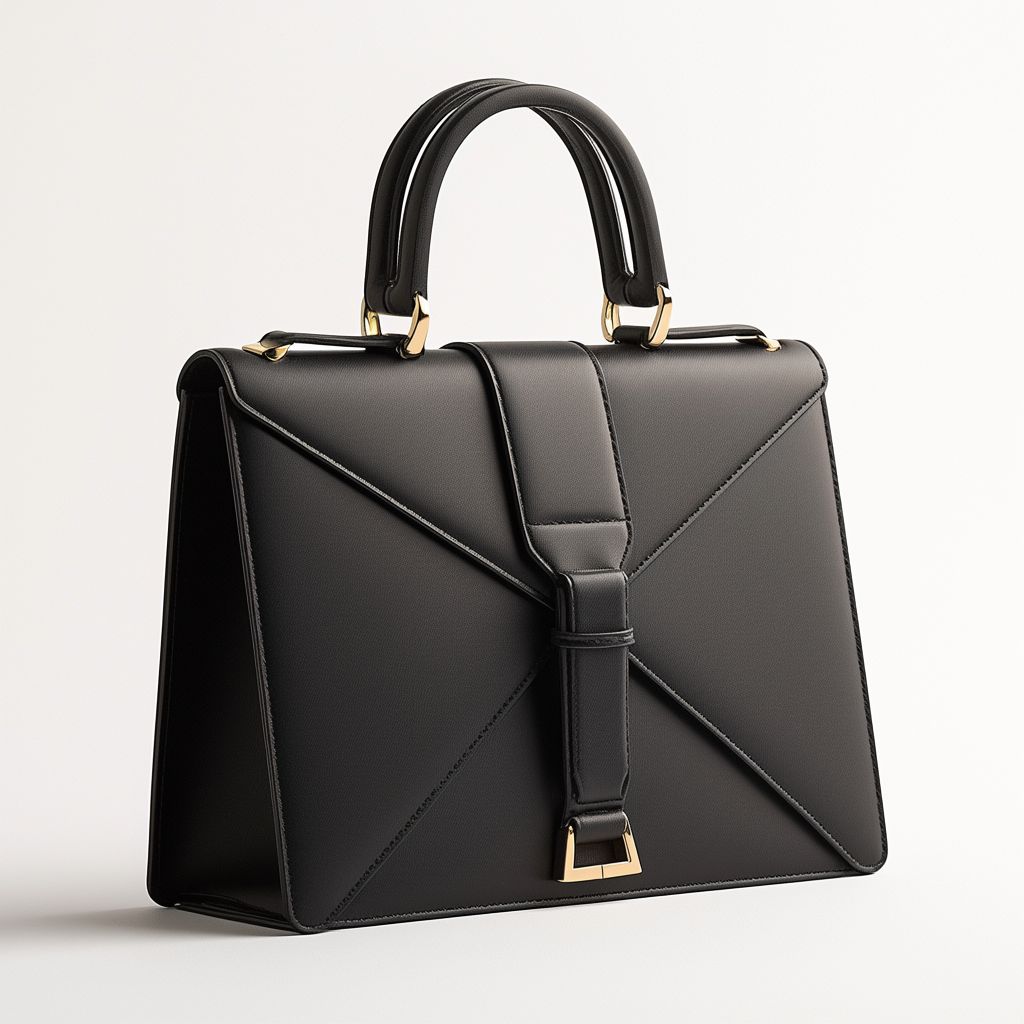
Designed for both function and fashion, a handbag can carry not only your basics but also additional items like a planner, tablet, or even a light jacket. Handbags often feature multiple compartments, giving you more organization and space to work with.
- Key Features of a Handbag:
- Size: Larger and more spacious, often capable of holding a variety of items beyond just your essentials.
- Design: More structured with distinct compartments, handles, and possibly detachable straps. Some handbags are sophisticated with additional features such as pockets for organization or metal accents for added style.
- Usage: Perfect for work, business meetings, or any occasion where you need to carry a variety of items. It's designed for both function and style, offering more versatility than a purse.
- Occasions: Formal, professional, or when you simply need more storage space - ideal for commuting to work, attending conferences, or going out for dinner.
Summary of Differences:
- Purse: Small, compact, and designed for casual, quick outings. Best for carrying only the essentials.
- Handbag: Larger, more structured, and designed for versatility and longer outings. Offers more space for organization and additional items.
These fundamental differences in size, design, and purpose are what truly set a purse apart from a handbag. Understanding them will help you make the right choice depending on your daily activities and the amount of space you need. Next, we'll explore how these two items differ depending on where you are in the world, as regional terminology can influence the way we use these terms.
Part 2: Regional Differences - Purse vs Handbag
While "purse" and "handbag" might seem like universal terms, their usage and meaning can vary depending on where you are in the world. The distinction between the two is especially noticeable between the United States and the United Kingdom, where the terms have different connotations and usage contexts.
1. In the United States
In the U.S., the distinction between a purse and a handbag is somewhat subtle, but it still exists. While the two terms can often be used interchangeably, there are nuances that set them apart.
Purse: In American English, "purse" tends to refer to a smaller, more casual bag, usually carried by women. It's often used to describe a compact bag that's easy to carry around on a daily basis. Purses are practical, designed to hold just the essentials like your phone, wallet, keys, and makeup, making them the perfect choice for everyday use.
- Example Use: “I grabbed my purse and headed out the door for a quick grocery run.”
- Connotation: Purses are associated with practicality and convenience, often used for casual activities or situations where you don't need to carry much.
Handbag: While "handbag" in the U.S. can technically mean the same as a purse, it's typically used to describe a larger, more structured bag. A handbag is often associated with a bit more sophistication, designed to hold more items. It can be used in both casual and formal settings, offering more organization and space.
- Example Use: “She carried a designer handbag to the meeting, which matched her professional attire.”
- Connotation: Handbags are seen as more formal or versatile accessories, and they often carry an air of elegance and sophistication. They're perfect for work, business meetings, or upscale events.
2. In the United Kingdom
Across the pond in the UK, the terminology is a bit different. The word "purse" and "handbag" carry distinct meanings and are used in different contexts.
Purse: In British English, “purse” refers more to a wallet or coin purse. It's generally a smaller item used to store money, cards, and perhaps some loose change. The British use the term “purse” to describe what Americans would call a wallet, and it's typically carried inside a larger bag or handbag.
- Example Use: “I can't find my purse - where did I put my change?”
- Connotation: A purse in the UK is a small, functional item primarily used for storing money and cards, and it's usually not something that can carry other personal items like a phone or makeup.
Handbag: In contrast, the term "handbag" in the UK is widely used to describe the larger, more structured bags that are similar to what Americans refer to as a “handbag.” British women tend to use "handbag" for any type of woman's bag, regardless of its size, but especially for medium to large-sized bags designed for both style and functionality. Like the American handbag, the British handbag is a more sophisticated, versatile accessory that can carry a lot more than just the essentials.
- Example Use: “Her handbag was overflowing with books, makeup, and a bottle of water.”
- Connotation: Handbags in the UK are synonymous with practicality and style. They're often used as a statement piece, and they can be casual or formal depending on the occasion.
Summary of Regional Differences:
- In the U.S., “purse” typically refers to a smaller, everyday bag, while “handbag” often describes a larger, more structured bag used for professional or formal settings.
- In the U.K., the term “purse” is commonly used to refer to a wallet, while “handbag” is the all-encompassing term for a woman's larger bag.
These regional differences can sometimes lead to confusion when shopping online or while traveling. However, knowing the distinctions between the two can help you make more informed choices, whether you're buying a new bag or simply navigating different cultural contexts.
Part 3: Design and Functionality Differences
The design and functionality of a purse versus a handbag are where the true differences lie. While both bags serve the essential purpose of carrying personal items, their design, capacity, and intended use can vary significantly. Understanding these distinctions can help you make the right choice depending on your needs, style, and the occasion.
1. Purse: Simplicity and Portability
A purse is all about simplicity and portability. Designed for those who prefer a minimalist approach to carrying their essentials, a purse typically focuses on functionality rather than frills. Whether it's a small crossbody bag or a clutch, purses are lightweight, easy to carry, and often lack the extra structure of larger bags.
Design: Purses tend to be smaller and more compact. They may feature a simple strap or even no strap at all in the case of clutches. Their minimalist design ensures they are easy to carry and don't feel bulky, making them ideal for quick trips or casual outings.
- Example: A small leather purse with just one compartment for your phone, cash, and keys.
- Functionality: Due to their compact size, purses usually have limited space and fewer compartments. They are designed for those who only need to carry the basics - just enough to get you through a day or evening out. Their simplicity makes them easy to grab and go, with minimal organization required.
Occasions: Perfect for casual days, evenings out, or trips where you don't need to carry too much. Purses offer convenience, but they are typically not ideal for work or events that require you to bring documents or extra items.
2. Handbag: Structure, Organization, and Versatility
In contrast, a handbag is designed to be larger, more structured, and more versatile. Offering more space and more compartments, a handbag allows you to organize your items more effectively and carry a wider variety of things. Whether it's for business, travel, or simply carrying more items, handbags are often the more practical choice for those who need more room in their bag.
Design: Handbags are larger and tend to have a more defined structure. They usually feature multiple compartments, zippers, and pockets, allowing for better organization. The size can range from medium to large, making them ideal for work, travel, or when you need to carry additional items like a notebook, makeup, or snacks. Many handbags come with both handles and adjustable shoulder straps, adding versatility for different carrying preferences.
- Example: A structured leather handbag with a few internal compartments, a zipper pocket, and a detachable shoulder strap.
- Functionality: Handbags are designed to accommodate more than just the basics. They can hold a wallet, phone, makeup, planner, water bottle, and even a light jacket. Their multiple compartments help you stay organized, making them a great choice for professional settings or travel.
Occasions: Ideal for work, meetings, business trips, or any time you need to carry a bit more without sacrificing style. A well-designed handbag can transition from day to night, offering both practicality and sophistication.
Key Differences in Functionality
- Capacity: Purses are small and minimalist, while handbags are larger and more spacious.
- Organization: Handbags offer more compartments for better organization, while purses usually provide limited space with fewer pockets or dividers.
- Versatility: Handbags are more versatile in terms of function and occasions. Purses, on the other hand, are more focused on convenience for casual outings or special events where you don't need to carry much.
Part 4: Suitability for Different Occasions
One of the key factors that sets purses and handbags apart is their suitability for various occasions. Depending on the event, your outfit, and what you need to carry, either a purse or a handbag could be the ideal choice. Understanding the differences in their functionality and design can help you decide which one is best suited for your specific needs.
1. Purses: Best for Casual and Quick Outings
Purses are designed for convenience and speed. Their smaller size and minimalist design make them perfect for casual outings, errands, or events where you don't need to carry much. Whether you're grabbing coffee with friends, running to the store, or attending a casual event, a purse offers the portability and ease that larger bags simply can't match.
Casual Outings: A purse is perfect for casual situations where you only need to carry your essentials - your phone, keys, wallet, and maybe a few cosmetics. It keeps things simple without the bulk, allowing you to focus on enjoying your time without being weighed down by a heavy bag.
- Example: Heading out for a coffee date or meeting friends for brunch. A small, crossbody purse would be ideal for carrying just what you need while keeping your hands free.
Evenings Out: Many people choose to carry a purse when they're going out in the evening, especially if they're attending a social gathering or a casual dinner. For these types of events, a purse is not only functional but also a stylish accessory that complements your outfit.
- Example: A clutch purse for a night out, where you just need to hold your phone, lipstick, and a credit card.
Quick Errands: If you're running to the grocery store or picking up a takeaway, a purse is perfect. You can easily grab it and head out the door without needing to worry about organizing large items.
2. Handbags: Perfect for Work, Travel, and Formal Events
On the other hand, handbags are all about organization, structure, and versatility. Their larger size and compartmentalized design make them better suited for situations where you need to carry more than just your basics. From the office to a formal event, a handbag serves as a reliable and stylish accessory that can handle more responsibility.
Work and Professional Settings: A handbag is ideal for work or professional meetings where you need to carry more than just your wallet and phone. You might need to bring a tablet, notebook, or important documents, and a handbag can provide the necessary space and compartments to keep everything organized.
- Example: A leather handbag with multiple compartments, perfect for holding your laptop, business cards, and paperwork during a day at the office.
Travel: Whether it's a weekend getaway or a longer trip, a handbag offers the capacity and organization you need to keep essentials at hand while on the go. Many handbags are designed with both style and practicality in mind, allowing you to store everything from your travel documents to your snacks in an accessible manner.
- Example: A spacious tote handbag, ideal for carrying everything you need while traveling, including your passport, snacks, phone charger, and even a light jacket.
Formal Events: For formal or semi-formal occasions, a handbag can elevate your look while providing functionality. Handbags often have structured designs that complement a more polished and professional appearance, making them suitable for events like weddings, galas, or business conferences.
- Example: A designer handbag paired with a tailored outfit for a corporate event or a formal dinner.
3. Versatility: A Purse vs Handbag for Every Occasion
While purses are often seen as more casual and handbags more versatile, many modern designs blend the two, offering a hybrid option that can be dressed up or down depending on the occasion. Some handbags are compact enough to double as a purse for a more casual look, while others can be dressed up for formal events, offering the best of both worlds.
Part 5: How to Choose the Right Bag for You
Choosing between a purse and a handbag can sometimes feel overwhelming, especially with so many options available. Whether you're looking for something to carry daily or need a bag that suits a specific occasion, the key is to think about your lifestyle, needs, and personal style. Here are some helpful tips to guide you in making the best choice between a purse and a handbag.
1. Consider Your Daily Needs
The first step in choosing the right bag is understanding what you'll be using it for on a daily basis. If you're someone who carries a lot of items - like documents, makeup, a tablet, or even snacks - you'll likely need the spaciousness and organization that a handbag provides. On the other hand, if you prefer to keep things simple with just your essentials, a purse might be all you need.
When to Choose a Purses: Opt for a purse if you want a lightweight and compact bag that holds just the essentials. It's perfect for running errands, casual outings, or days when you don't want to be weighed down.
- Key Considerations: Think about how much you typically carry. If you mostly need to carry your phone, wallet, and a few small items, a purse is the better choice.
When to Choose a Handbag: Choose a handbag if you need extra space and compartments. Handbags are ideal for work, travel, or days when you need to carry more than just the basics - documents, a charger, a bottle of water, or a snack might all be on your list.
- Key Considerations: A handbag will offer the functionality and organization needed for a busy day at work or a trip out of town. With more compartments, you can organize your items better.
2. Think About Your Personal Style
Another important factor is your personal style. Are you drawn to sleek, minimalist designs, or do you prefer something with more structure and flair? If your fashion choices tend to be more casual and laid-back, a purse may be a better fit, offering you the perfect balance of practicality and style. On the other hand, if you prefer a more polished look, a handbag might be more suited to your wardrobe, especially if you want something that can easily transition from work to after-work drinks.
For a Casual, Relaxed Style: Purses tend to be more in tune with casual fashion. Opt for a cute, functional purse that complements your laid-back wardrobe.
For a Polished, Professional Style: A structured handbag with a sleek design fits better with professional outfits. Look for high-quality materials and a design that enhances your formal attire.
3. Consider the Occasion
The occasion will often dictate whether a purse or a handbag is appropriate. For a business meeting or a formal dinner, a well-organized handbag is the ideal companion. It's large enough to carry the essentials and extra items like a notebook or documents, while still looking professional and stylish. For a casual day at the park or a shopping trip, a purse will provide the freedom and convenience you need without the extra bulk.
For Formal Occasions: Choose a sophisticated handbag, one that enhances your professional or formal look. Think leather or high-end designer bags for a chic touch.
For Casual Occasions: A purse works best when you need something compact and convenient. A crossbody or small shoulder purse is both stylish and practical for quick trips or casual events.
4. Durability and Practicality
Lastly, consider the durability and practicality of the bag. While handbags are typically designed with longevity in mind, purses are also made from durable materials that can handle everyday use. However, because purses tend to be smaller and more minimal, they may wear out faster if you overload them. If you're someone who needs a sturdy bag that will last throughout the day, a well-constructed handbag might be the better option.
Purses: Choose one made from strong, lightweight materials if you're looking for a compact, easy-to-carry option. Consider a leather or high-quality fabric purse for both style and durability.
Handbags: Go for a spacious, high-quality handbag that offers ample compartments and is durable enough for heavy use. Leather, canvas, and nylon are all excellent material choices for handbags, especially if you need a bag that will stand up to daily wear.
Conclusion
Choosing the right bag between a purse and a handbag ultimately depends on your needs, lifestyle, and personal preferences. Whether you need something lightweight and compact or more spacious and organized, both options have their benefits. By considering how much you carry, your personal style, and the occasions you'll be attending, you can select the perfect accessory to keep you organized and stylish throughout your day.
FAQ
As you explore the differences between a purse and a handbag, you may still have a few questions. Here are some of the most common ones to help clarify any confusion and assist you in making the best choice for your needs.
1. Can a purse be used as a handbag?
Yes, in many cases, a purse can function as a handbag, especially if it has enough space and compartments for your daily items. The main difference lies in size and structure - while a purse is generally smaller and more casual, some purses are designed with added features that give them a more handbag-like quality. If you need something compact but with a bit more organization, a mid-sized purse could easily serve the same purpose as a handbag.
2. What should I carry in my purse versus my handbag?
The key difference between a purse and a handbag is size and capacity. Purses are for carrying only the essentials, like:
- Wallet or cardholder
- Phone
- Keys
- Lip balm or small cosmetics
On the other hand, handbags are typically larger and can hold additional items like:
- Planner or work documents
- Tablet or e-reader
- Water bottle
- Extra makeup or toiletries
- Snacks or personal items for travel
3. Are purses more casual than handbags?
Yes, generally speaking, purses are seen as more casual than handbags. They're ideal for casual outings, quick errands, or evenings out where you don't need to carry much. Handbags, on the other hand, are more versatile and can be dressed up or down. They're often used for more formal occasions, work, or travel, where you need additional space and structure.
4. Can I use a purse for work or formal events?
While purses are typically seen as more casual, there are certain types of purses - such as structured totes or sleek crossbody bags - that can be suitable for more professional or formal settings. The key is in the design and material. A leather purse or a well-designed structured purse can easily complement business attire, but for more formal events, a handbag may still be the better option due to its greater size and organizational features.
5. How do I know which bag is right for me?
The right choice depends on your lifestyle, needs, and style preferences. If you need a bag for everyday use that can carry your essentials without adding bulk, a purse is likely the better option. If you carry more items, need more organization, or attend events that require a more polished look, a handbag will suit you better. Consider how much space you need, the occasion, and whether you prefer a lighter, more compact bag or something larger and more structured.

.webp)

